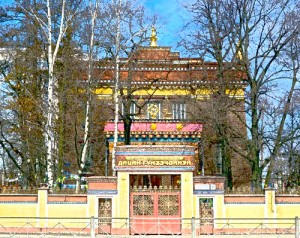 When I was studying Russian in St. Petersburg, I visited the northernmost Buddhist temple in the world. After I photographed the interior of the temple, I was invited to sit with a woman from Siberia–who said the temple was built in the early 20th century by Siberian monks from Buryatia. Since then, I’ve been interested in Buddhism in Russia–and wish I could catch this stimulating talk at Columbia next week.
When I was studying Russian in St. Petersburg, I visited the northernmost Buddhist temple in the world. After I photographed the interior of the temple, I was invited to sit with a woman from Siberia–who said the temple was built in the early 20th century by Siberian monks from Buryatia. Since then, I’ve been interested in Buddhism in Russia–and wish I could catch this stimulating talk at Columbia next week.
Caught Between the Empires: Tibetan Buddhism in Russia and the Qing State
A presentation by Nikolay Tsyrempilov
Columbia University (SIPA Room 918)
April 15, 6pm
The talk will touch on the issues of comparative empire studies, religious policies implemented by the Romanovs and Qing, colonization strategies, imperial bureaucracy and religious migrations. The main focus will be on the Buriats, a small indigenous ethnic and religious minority inhabiting the area around Lake Baikal. Buriat history has traditionally been studied within the context of Russian history, but I argue that thorough analysis of the history of frontier peoples like the Buriats is only possible if we consider their history in the context of imperial macrosystems, to use here the term of Alexei Miller. In this context a case study of peoples whose social structure and religious infrastructure overlapped as contiguous empires can be revealing. It is assumed also that the comparison of Tibetan Buddhist institutions in the Russian and Qing empires that had a common origin, interacted extensively, and had many parallels, can tell us more about the nature of these empires.